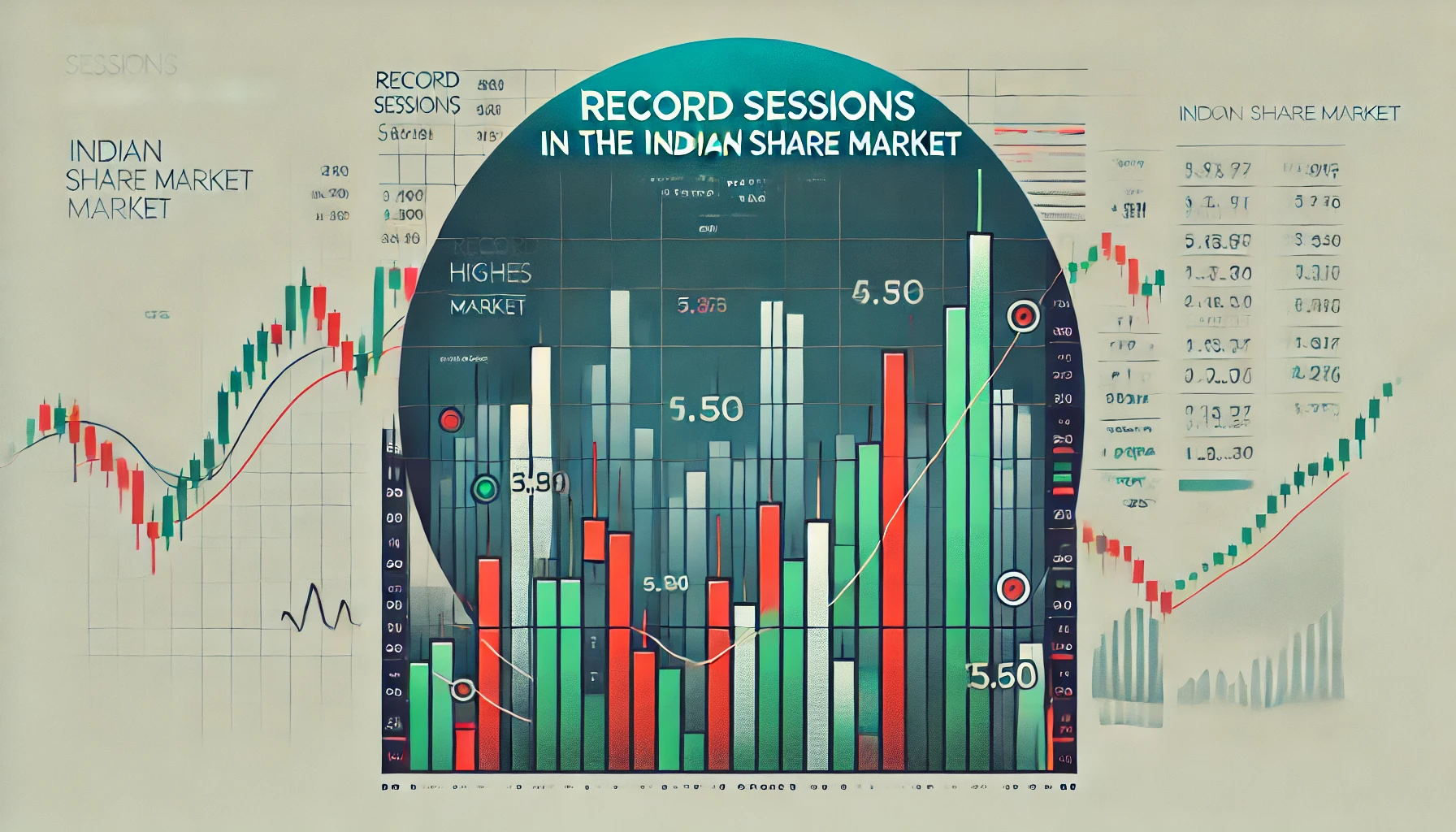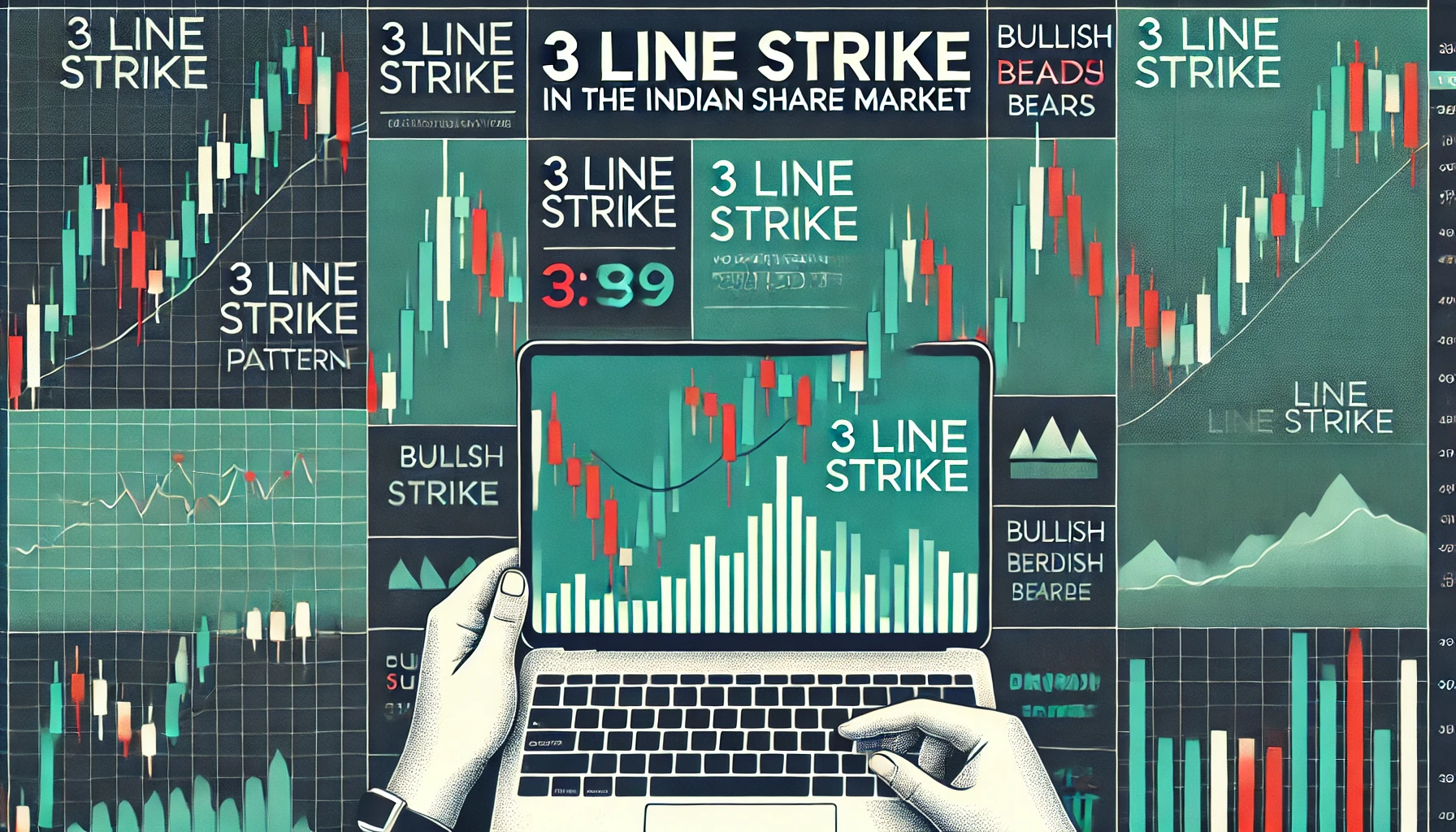In the world of stock market analysis, candlestick patterns offer valuable insights into price movements. One of the most well-known patterns is the Harami. A Harami pattern is a two-candle formation that signals indecision in the market and a possible reversal in trend. This blog will delve into the Harami candlestick pattern, explore its significance in the Indian share market, and review historical data to highlight its impact.
What is a Harami Candlestick Pattern?
A Harami is a two-candle pattern where the first candle is large, and the second candle is significantly smaller, fitting within the range of the first candle. The word “Harami” means “pregnant” in Japanese, symbolizing how the second candle is contained within the body of the first.
| Candlestick Characteristics | Harami Pattern |
|---|---|
| Large First Candle | True |
| Small Second Candle | True |
| Second Candle Inside First | True |
The Harami pattern indicates a potential reversal in market sentiment and is divided into two main types:
Types of Harami Patterns:
- Bullish Harami:
- Appears during a downtrend.
- The first candle is bearish (red), and the second candle is a small bullish (green) candle.
- This pattern suggests that selling pressure is decreasing, and a bullish reversal could follow.
- Bearish Harami:
- Occurs in an uptrend.
- The first candle is bullish (green), and the second is a small bearish (red) candle.
- This pattern indicates that buying pressure is losing strength, and a bearish reversal may occur.
| Harami Type | Market Sentiment | Expected Outcome |
|---|---|---|
| Bullish Harami | Decreasing Selling Pressure | Uptrend Reversal |
| Bearish Harami | Decreasing Buying Pressure | Downtrend Reversal |
Interpretation of Harami in the Indian Share Market
In the Indian stock market, the Harami pattern is commonly used by traders to identify potential reversals. However, the effectiveness of the pattern depends on the broader market context.
- Bullish Harami in a Downtrend: A Bullish Harami indicates that the sellers are losing control, and the market could be preparing for a reversal. Traders may use this signal to enter long positions after confirmation from other technical indicators.
- Bearish Harami in an Uptrend: A Bearish Harami suggests that buyers are losing momentum. This pattern can serve as an early warning for traders to consider exiting long positions or initiating short trades.
Historical Examples of Harami in the Indian Share Market
Several historical examples highlight the significance of the Harami pattern in the Indian share market:
- Infosys (2019): In October 2019, a Bullish Harami appeared on Infosys’ chart during a prolonged downtrend. The stock rebounded by 10% in the following weeks, confirming the bullish reversal.
- ICICI Bank (2020): In January 2020, ICICI Bank formed a Bearish Harami after a significant uptrend. The stock experienced a 7% decline in the subsequent days, aligning with the pattern’s prediction.
| Stock/Index | Date | Harami Type | Resulting Trend |
|---|---|---|---|
| Infosys | October 2019 | Bullish Harami | Bullish Reversal (10%) |
| ICICI Bank | January 2020 | Bearish Harami | Bearish Reversal (7%) |
How to Trade Using the Harami Pattern in the Indian Share Market
While the Harami pattern signals potential reversals, it’s crucial to use additional technical indicators to confirm the trend change. Here are some effective strategies:
- Harami with Moving Averages: Combining the Harami pattern with moving averages, such as the 50-day or 200-day moving average, helps confirm the strength of the reversal. If a Harami appears near these key levels, the likelihood of a trend change increases.
- Harami with RSI: The Relative Strength Index (RSI) can be used in conjunction with the Harami pattern. A Bullish Harami combined with an oversold RSI provides a stronger buy signal, while a Bearish Harami with an overbought RSI strengthens the case for a sell.
- Harami with Volume Analysis: Volume is an essential factor when interpreting the Harami pattern. If a Harami forms with increased trading volume, it is a more reliable signal that the market may reverse.
Limitations of the Harami Pattern
Though the Harami pattern is useful in predicting potential market reversals, it does have some limitations:
- False Signals: Harami patterns can sometimes produce false signals, especially in choppy or sideways markets. Traders should be cautious and look for confirmation before making any decisions.
- Not Always Reliable in Strong Trends: During strong bullish or bearish trends, the Harami pattern may not be a reliable indicator of a reversal. In such cases, the trend may continue despite the formation of a Harami.
Case Study: Harami Pattern and Nifty 50
In July 2020, the Nifty 50 index displayed a Bullish Harami pattern during a prolonged downtrend. This pattern signaled a potential reversal, and the index rallied over the next few weeks. Traders who recognized the Harami and combined it with RSI and moving averages were able to capitalize on the bullish reversal.
| Date | Index | Harami Type | Post-Pattern Movement |
|---|---|---|---|
| July 2020 | Nifty 50 | Bullish Harami | Bullish Reversal (5%) |
How to Use the Harami Pattern in Trading Strategies
To successfully incorporate the Harami pattern into your trading strategy, consider the following:
- Wait for Confirmation: While the Harami pattern signals a potential reversal, it’s best to wait for confirmation from the next few candles or other technical indicators before entering a trade.
- Use Stop-Loss Orders: To mitigate risk, set stop-loss orders just below the Bullish Harami or above the Bearish Harami. This helps protect against potential false signals or unexpected market movements.
- Combine with Other Indicators: The Harami pattern is most effective when used alongside other technical indicators such as moving averages, RSI, and Bollinger Bands. These tools help confirm the validity of the pattern.
Conclusion:
The Harami candlestick pattern is a valuable tool for traders in the Indian share market, signaling potential market reversals and offering opportunities for strategic entry and exit points. While it is an effective pattern, it is essential to combine it with other indicators and seek confirmation before making trading decisions.
By understanding the characteristics and historical significance of the Harami pattern, traders can improve their technical analysis and capitalize on market trends.

What is the TRIN stock market indicator?
The TRIN (Trading Index), also referred to as the Arms Index, is a technical analysis …

Record Sessions
The Indian share market is a dynamic and volatile space where major highs and lows …

3 Line Strike
Candlestick patterns are a vital tool for traders in the stock market, offering insights into …

3 White Soldiers and 3 Black Crows
Candlestick patterns are a key element of technical analysis in stock trading, offering clear signals …

Gapping Doji
Candlestick patterns are a critical part of technical analysis in the stock market, providing traders …

3 Windows
Candlestick patterns are a vital part of technical analysis, offering traders and investors insights into …

2 Gapping Candles
In the fast-paced world of the Indian stock market, technical analysis plays a crucial role …

3 Inside Down and Up
Candlestick patterns are powerful tools in the world of technical analysis, offering traders insight into …

Bullish and Bearish Belt Hold
Technical analysis is an essential part of trading in the Indian share market. Candlestick patterns, …

Piercing and Dark Cloud Cover
In the ever-evolving Indian stock market, candlestick patterns are crucial for traders aiming to predict …

Double Doji
Candlestick patterns have long been a favored tool for technical traders to forecast market movements. …

Rising and Falling Windows
In the world of technical analysis, candlestick patterns are vital tools for traders to anticipate …

Tweezer Top and Bottom
In the fast-paced world of the Indian share market, traders use technical analysis tools to …

Morning Star and Evening Star
In the Indian share market, technical analysis is a valuable tool for traders aiming to …

Hammer and Hanging Man
The Indian stock market offers a wealth of opportunities for traders who understand technical analysis. …

Shooting Star and Inverted Hammer
The Indian stock market, with its dynamic nature, presents various opportunities for traders and investors. …

Last Engulfing
The Indian share market is filled with patterns that can help traders make informed decisions. …

Harami
In the world of stock market analysis, candlestick patterns offer valuable insights into price movements. …

Engulfing
The Indian share market is known for its volatility, and traders often rely on technical …

Marubozu
Candlestick patterns are powerful tools used by traders in the Indian share market to analyze …

Spinning Top
The Indian share market, like any other, experiences constant fluctuations due to a multitude of …

Doji
The Indian share market is dynamic, with investors using various tools to gauge stock performance. …

Double Top
In the world of technical analysis, chart patterns are valuable tools that help traders spot …

Tweezer
In the Indian share market, where volatility and price fluctuations are part of daily trading, …

Harami
In the world of technical analysis, candlestick patterns are powerful tools that help traders make …

Heiken-Ashi
Navigating the Indian share market can be challenging due to the inherent volatility and market …

Ichimoku
In the world of technical analysis, few indicators offer the comprehensive insights that the Ichimoku …

Value Charts
In the ever-changing landscape of the Indian share market, traders and investors need tools that …

Money Flow Index
In the Indian share market, identifying trends, understanding momentum, and assessing volume are critical components …

Aroon
In the fast-paced world of the Indian share market, identifying market trends and spotting reversals …

Gator Indicator
In the Indian share market, success is largely dependent on identifying the right trends and …

Adaptive Moving Average
In the dynamic and often volatile Indian share market, traders and investors continuously seek tools …

Coppock Curve
In the ever-evolving landscape of the Indian share market, traders and investors rely on technical …

Premier Stochastic Oscillator
In the fast-paced world of the Indian share market, technical indicators are indispensable tools that …

Dynamic RSI
The Indian share market is known for its volatility, with frequent shifts in trends influenced …

Vortex
The Indian share market offers plenty of opportunities for traders and investors to capitalize on …

Glitch Index
The Indian share market, like all financial markets, is prone to moments of irregular behavior—unexpected …

Triple Exponential Average
Navigating the Indian share market requires traders to use effective tools that help them track …

Know Sure Thing
The Indian share market presents countless opportunities for traders and investors, but making accurate decisions …

Mass Index
The Indian share market is volatile, with price trends constantly shifting due to numerous factors. …


















